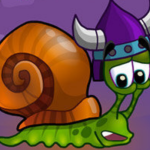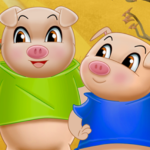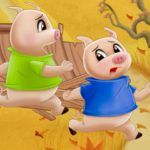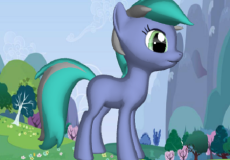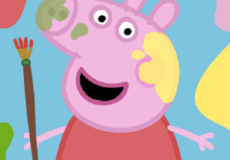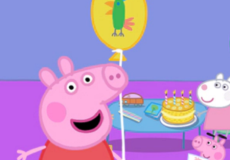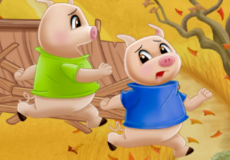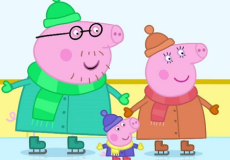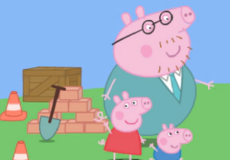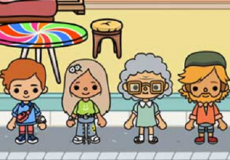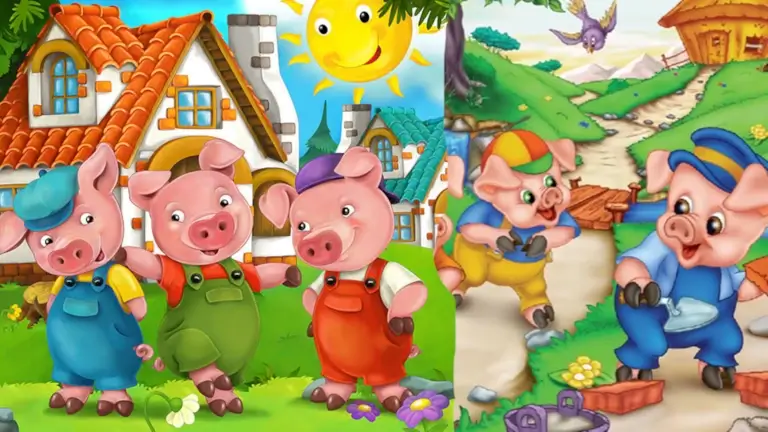

Best Games
Favourite Games
New Games
The Three Little Pigs
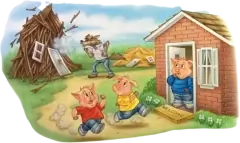
The Three Little Pigs is one of the most recognizable fables in Western folklore. Known primarily as a children’s story, it has been adapted into many formats over the centuries. Today, it also exists in the form of interactive digital games. On our website, we offer a selection of games based on this tale, each presenting different interpretations and gameplay mechanics.
Origins of the Story
The first printed versions of The Three Little Pigs appeared in the 19th century. One of the earliest published accounts is attributed to James Orchard Halliwell, who included it in a collection of English fairy tales in the 1840s. The story likely has earlier oral roots in English folk tradition. Over time, it became a standard part of nursery literature.
The most commonly known version involves three pigs who each build a house—one of straw, one of sticks, and one of bricks. A wolf attempts to blow down each house. The straw and stick houses fall, but the brick house holds. The moral often emphasized is the value of hard work and planning.
In the 20th century, the story was popularized globally through animated adaptations, especially the 1933 Walt Disney cartoon, which cemented many of the phrases and plot points now associated with the tale.
The Story as Game Foundation
Due to its simple plot and clear roles, The Three Little Pigs provides an effective foundation for game development. The characters are well-defined, the conflict is easy to understand, and the objectives are direct. Games based on this story usually fall into the following categories:
- Construction and strategy: Players must build houses or defenses using different materials.
- Resource management: Gathering wood, straw, bricks, and choosing how to use them.
- Survival scenarios: Preparing for and resisting attacks from the wolf.
- Moral decision-making: Choosing how to interact with the other pigs or the wolf.
By turning the fable into an interactive format, developers are able to explore variations in outcomes, challenge players with different levels of difficulty, and introduce time-based or logic-based tasks.
Games Available on Our Website
Our platform features several games inspired by The Three Little Pigs. Each game interprets the original story in a unique way. Some focus on building structures quickly before the wolf arrives. Others are more narrative-driven, letting players make decisions as one of the pigs.
Here are examples of the types of games you can find:
- Timed Building Challenge: Players must construct a house using one of three materials before the countdown ends.
- Wolf Avoidance Simulator: Control a pig trying to escape the wolf while gathering supplies.
- Moral Choice Game: Make decisions for each pig and determine how they will face the approaching threat.
- Educational Puzzle Game: Designed for children, focusing on cause-and-effect through simple tasks.
These games are suitable for different age groups and vary in complexity. All are available directly on our site without requiring downloads or installation.
Educational Value
Although originally intended for entertainment, the story has long been used to teach lessons in personal responsibility, planning, and resilience. Many of the games based on The Three Little Pigs retain or expand on these themes. Players are often required to make choices that involve trade-offs, such as speed vs. durability, or cooperation vs. independence.
For young players, these games can serve as an introduction to basic concepts such as:
- Sequencing and prediction
- Resource allocation
- Construction logic
- Basic survival strategy
In classroom settings, these games can also prompt discussions about decision-making and consequences. For example, a teacher might ask students to compare the pigs’ decisions and outcomes, or propose alternative actions the characters could have taken.
Game Mechanics and Variations
Most games based on this story revolve around a few core mechanics:
- Material selection: Each material has strengths and weaknesses. Players must choose based on availability and time limits.
- House construction: Some games allow for free placement of walls and reinforcements. Others use fixed templates.
- Wolf interaction: The wolf appears as a timer, enemy unit, or decision-triggering event. In some versions, players can also play as the wolf.
- Progression system: Success or failure in building affects the player’s standing in subsequent levels or stages.
Some games add narrative choices, letting players steer the story in alternate directions. For instance, a pig might negotiate with the wolf instead of hiding. These changes help increase replay value and user engagement.
The Three Little Pigs Horror
The Three Little Pigs Horror is a dark reimagining of the well-known fairy tale, turning a simple story about building houses into a survival-focused experience. Players take control of the pigs as they try to construct their homes while avoiding a looming threat in a shadow-filled forest. Each house—straw, wood, and brick—is a structure and a fragile barrier between the characters and the creature hunting them. The game focuses on stealth, decision-making, and time management as players gather materials and reinforce defenses before night falls.
The atmosphere is built through analog-inspired visuals and subtle environmental sounds that grow more intense as danger approaches. The predator watching the pigs behaves unpredictably, forcing players to adapt their strategies. Hidden messages and distorted animations add an extra layer of discomfort. Multiple endings are available depending on the player’s actions, with some paths leading to temporary safety and others to irreversible loss. The game transforms familiar characters and settings into something darker, exploring fear through pacing, pressure, and narrative tension.
Conclusion
The 3 Little Pigs remains a relevant and versatile source material for modern games. Its simple structure supports a range of game formats, from fast-paced arcade-style experiences to slower, decision-based simulations. On our website, players can explore different interpretations of the story and test their ability to plan, build, and survive.
Discuss The Three Little Pigs


